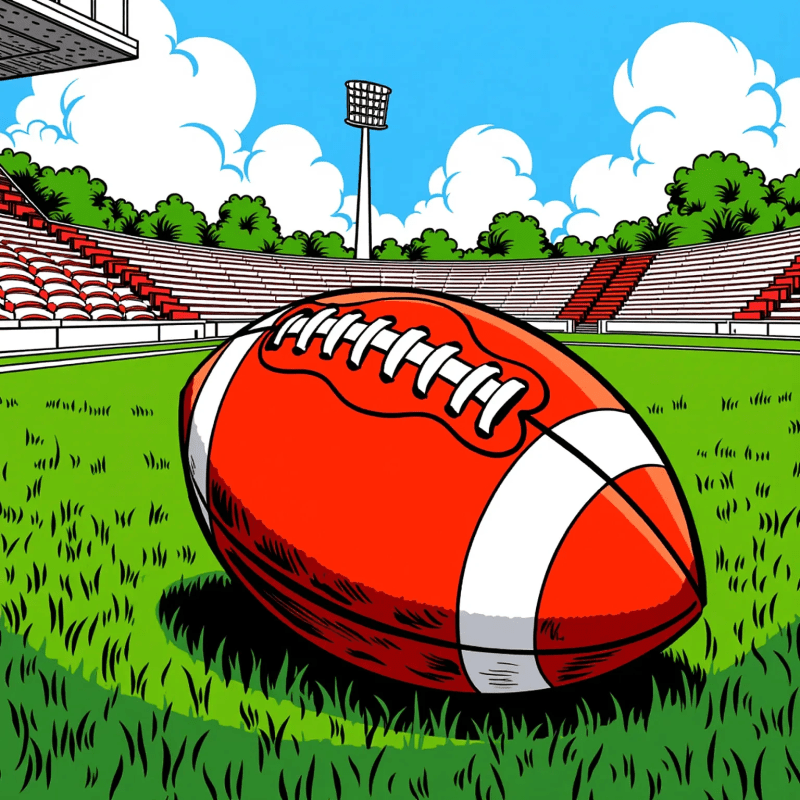Getting familiar with your flag football playbook is key to playing your best game. Think of it as your teamwork magic book! It’s filled with all the plays and strategies that will help you and your teammates shine on the field. Understanding each section will boost your confidence and keep everyone on the same page during game time.
Start by learning the terminology. Each play will have specific names and codes. You don’t want to be the player who gets mixed up during a crucial moment! Create flashcards with the names of the plays on one side and their details on the other. This simple trick can make a big difference in how quickly you pick things up.
Next, take the time to visualize the plays. Grab a friend or teammate and walk through the plays together. Acting them out will help you remember not just your role but also how it fits into the overall strategy. Plus, it's a great way to bond with your teammates!
Lastly, don’t hesitate to ask questions. Whether it’s your coach or a veteran player, most people are more than willing to help you understand. Sharing tips and strategies from fellow players can give you new insights and enhance your knowledge of the game.
Key Strategies for Effective Team Communication
Effective communication is at the heart of any successful flag football team. It's not just about shouting plays on the field; it’s about creating a bond and understanding among teammates. Here are some key strategies to enhance communication during your games and practices.
1. Establish Clear Roles
2. Use Simple Language
3. Encourage Open Feedback
By using these strategies, your team can boost its overall communication and play more effectively together. Remember, the better you talk, the better you’ll play!
Essential Drills to Improve Your Skills
Want to take your flag football skills to the next level? Practicing the right drills can make a huge difference in your game. Here are some essential drills that will help you sharpen your offensive and defensive skills.
1. Route Running Drills: Good route-running is crucial for any receiver. Start by setting up cones to mark your routes. Practice cutting sharply and making quick changes in direction. Focus on your footwork and timing. This drill helps you get open and create space from defenders.
2. Flag Pulling Drills: Since flag football is all about evasion and defense, mastering flag pulling is vital. Pair up with a teammate and take turns running while the other practices pulling the flags. Work on your positioning – aim for the flag, not the player. You’ll be surprised how much this sharpens your defensive instincts.
3. Passing Drills: Grab your teammates and work on your passing game. Set different targets at various distances and angles. Practice both short and long throws. Focus on accuracy and timing. The more confident you feel throwing the ball, the more effective you’ll be during games.
4. Agility Ladder: An agility ladder is a fantastic tool for improving foot speed and coordination. Simply lay it out on the ground and practice different footwork patterns like side steps, hops, and high knees. This will help improve your quickness on the field, making it easier to dodge opponents and change directions.
By incorporating these drills into your training routine, you’ll build confidence and develop skills that will make you a standout player. Have fun with it, and watch your game elevate!
Adjusting Plays for Game Day Success
When it comes to flag football, having a solid playbook is key, but let’s face it: the game can change in an instant. Adjusting your plays for game day success is all about being flexible and ready for anything. Here are a few tips to help you adapt on the fly and make game day a breeze.
First off, communicate with your team. Before the game, chat with your players about potential adjustments based on the opponent's strengths and weaknesses. Knowing what works best against specific teams will set you up for better plays. Here’s how to keep the lines open:
Another important aspect is to simplify your plays. When the pressure’s on, sticking to the basics might be your best bet. Focus on a few key plays that everyone is comfortable with, and ensure every player knows their role inside and out. This way, you’ll stay organized and avoid confusion when the game gets intense.
Lastly, always keep an eye on your opponents during the game. If you notice a weakness in their defense or a player consistently struggling, don’t hesitate to tweak your strategy. Trust your instincts—if something isn't working, try switching up your approach. The best teams are those that can adjust quickly and effectively to take advantage of any situation that unfolds on the field.

